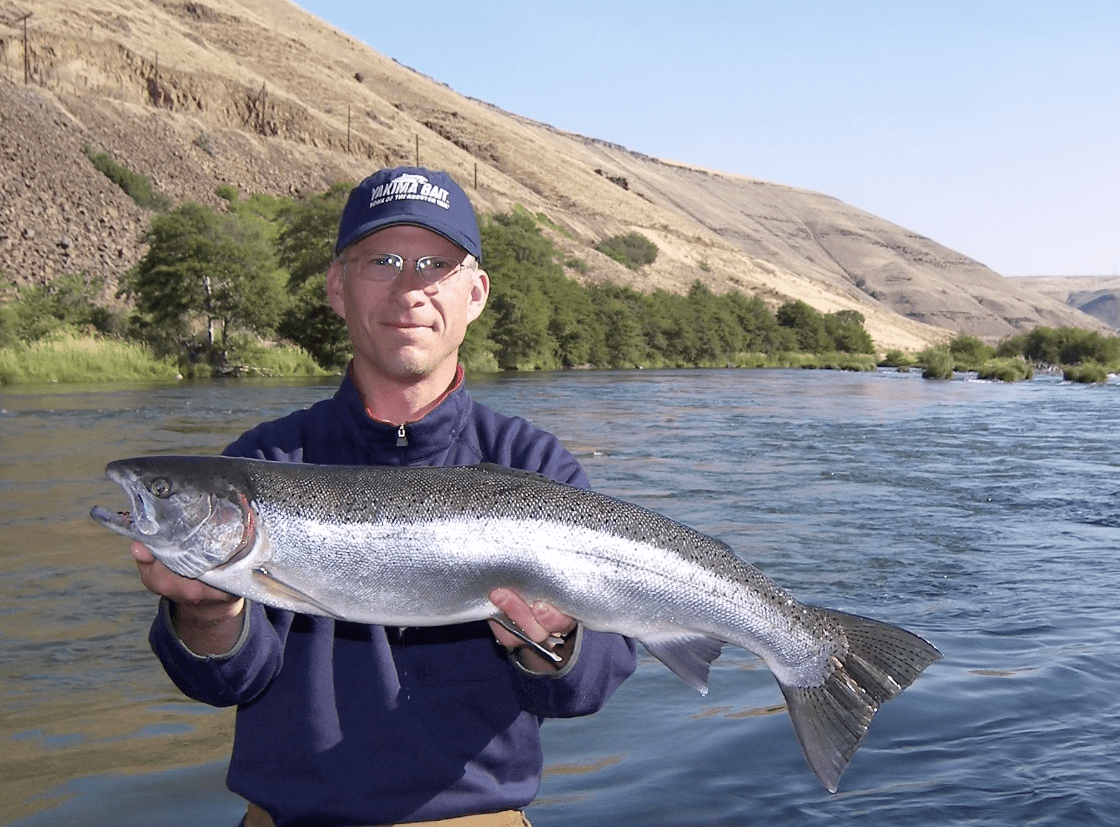
Deschutes To Stay Open For Steelhead After July Passage Mark Met
THE FOLLOWING IS A PRESS RELEASE FROM THE OREGON DEPARTMENT OF FISH AND WILDLIFE
The popular Lower Deschutes River will remain open by permanent rule for steelhead fishing through at least Sept. 14 after meeting a key threshold in its fish management framework.

Between July 1- 25, 2023, a total of 10,809 unmarked summer steelhead passed Bonneville Dam. A minimum of 9,900 was needed during the month of July to keep steelhead fishing open. If less than 9,900 had passed for the entire month of July, Deschutes River steelhead fishing would have closed Aug. 15.
The next criteria ODFW staff will monitor to determine if the fishery remains open will be total unmarked steelhead passage between July 1-Aug. 31. This threshold must be greater than 23,100 to keep the fishery open; if below that number, steelhead fishing on the Deschutes River will close Sept. 15.
According to Jason Seals, Deschutes District Fish Biologist, historic steelhead data that’s been collected at Bonneville Dam and the Lower Deschutes River shows a strong relationship between these locations to indicate abundance of the wild summer steelhead population in the Lower Deschutes. Passage at Bonneville Dam and capture numbers at Sherars Falls on the Deschutes help managers decide when low run size returns warrant additional conservation actions.
Wild upriver summer steelhead destined for areas throughout the Columbia and Snake River basins (including the Deschutes, John Day, Umatilla and Grand Ronde rivers) enter freshwater from May through October and pass above Bonneville Dam starting in July. Returns to the Columbia and Snake River basins have been poor for seven years running now and another low return was forecast this year. (Current data indicate that while the run for the entire Columbia/Snake Basin remains low, the steelhead run into Deschutes is on track to meet minimum abundance thresholds for now.)
Poor returns are due to factors including dams, degraded freshwater habitat, predation, higher river temperatures, blocked access to spawning areas, ocean conditions and migratory patterns that put them in warmer offshore ocean waters.
In 2021, steelhead fishing was closed on the Deschutes River for the first time since 1978 due to low returns, which impacted anglers, guides and local communities who participate in this popular fishery.
After that closure, ODFW fish biologists throughout the Columbia and Snake River systems got together to develop frameworks to meet conservation needs and provide transparency on when fishing would be open or closed.
“The Deschutes River is one of the most popular rivers in the West for fishing,” said Seals. “The Deschutes River Framework provides a way for those who participate in this fishery to pay attention to certain thresholds and understand how decisions are made to keep the fishery open or close the river.”
Other Columbia River tributaries also have frameworks to determine if they are open or closed. Currently, the John Day, Umatilla and Grande Ronde are open for steelhead for dates and bag limits as outlined in the permanent regulations, but the Walla Walla is closed. See the Columbia Basin steelhead page for more information on frameworks for these rivers and how summer steelhead fishing is managed on the mainstem, https://myodfw.com/articles/steelhead-management-columbia-snake-river-basins.
Always check for the latest regulations before fishing by going to the Recreation Report / Fishing Report for your zone and clicking Regulation Updates https://myodfw.com/recreation-report/fishing-report
Anglers are reminded to follow best practices when steelhead fishing in case they need to release a wild steelhead:
- Fish earlier in the day when water temperatures are cooler.
- Land the fish quickly. A fish on the end of the line is under stress, so don’t play the fish to utter exhaustion. Severe exhaustion reduces the fish’s odds of surviving.
- Support the fish when bringing it in. Support the fish underwater in a natural position, handling it as little as possible. Give it time to recover and keep it in the water, it needs all the oxygen it can get from the water passing over its gills.
- Use barbless hooks. Bring the fish quickly within reach. Leave the fish in the water and, without squeezing it, remove the hook carefully with long-nosed pliers or thumb and forefinger. If necessary, cut the leader near the hook, which will dissolve over time. Note barbless hooks are recommended but not required on the Deschutes River.
- Revive the fish before releasing. Point the fish into the current or in standing water, gently move the fish forward until its gills are moving and it maintains its balance on its own. Let the fish swim freely from your hands.
- Use appropriate gear. Use tackle, including line and rod, that are strong enough to bring your fish in quickly and gently.
- Getting a photograph? Minimize handling and keep the fish in the water.

